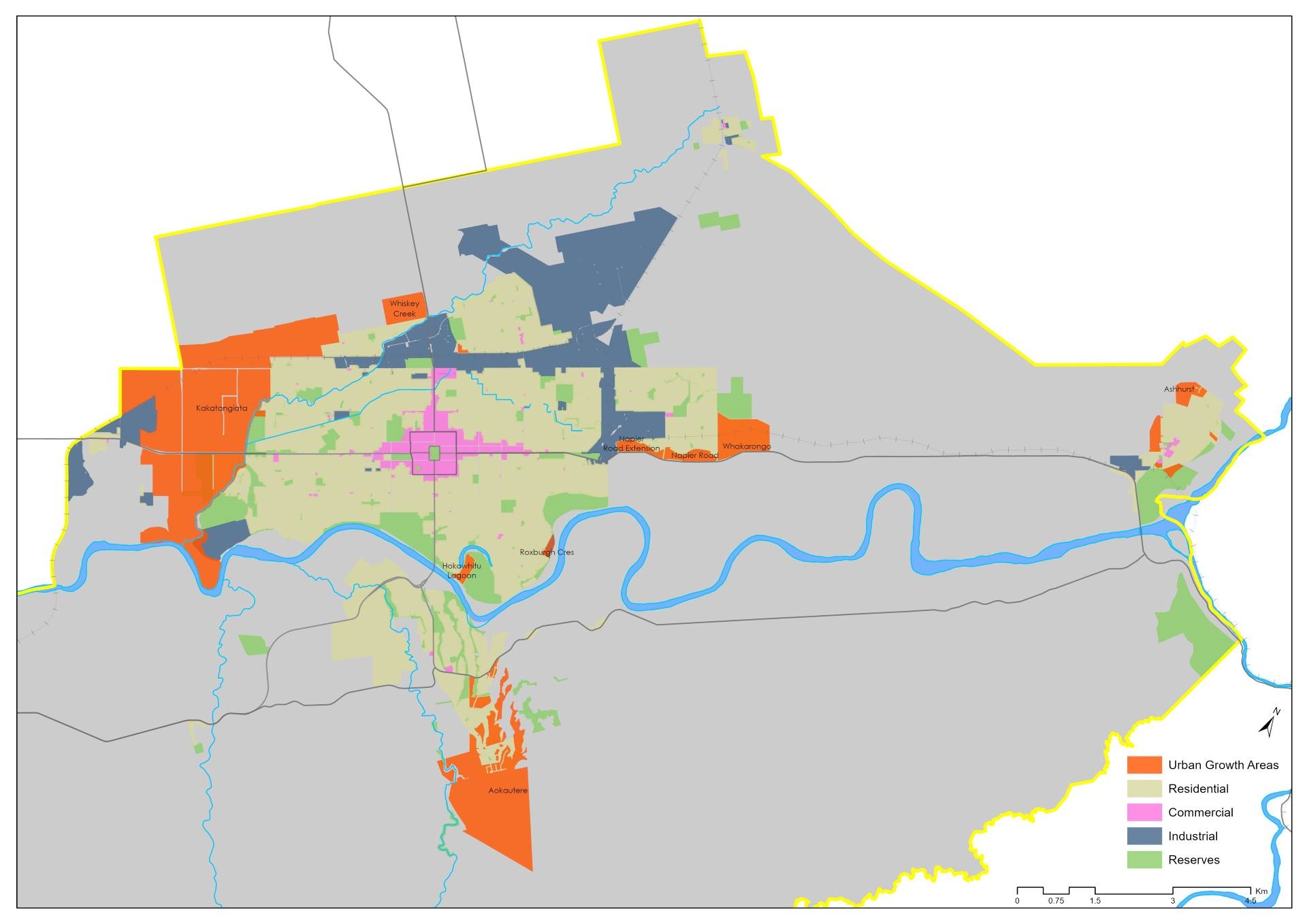Rezoning
All cities have a District Plan made up of different zones that determine the main land use in that area, for example: Residential, Commercial, Industrial and Rural. Over the next year a number of areas in and around our city will be rezoned to change the way they can be used. This page explains why we are making these changes.
Tell us what you think about our plans for housing and city growth
We're asking your views as part of consultation on our Long-Term Plan 2024-34, which is open for feedback until 9 May.
Development at Aokautere, Ashhurst and Kākātangiata is subject to Council seeking external funding for new infrastructure required to service growth in these areas.
We encourage you to read about what we're proposing and have your say.
Our plans for housing
Our plans for city growth
We need more homes
Our city is currently going through the highest rate of population and economic growth since the 1970s. While this is great news, more people wanting to live and do business here is pushing up the demand for housing, which means we need more services and infrastructure.
To continue our positive growth, we need to make more housing options available for new residents and those already here. Increasing supply helps keep Palmy an affordable market to both buy and rent in.
We’re using what we already have
The size of the average household will likely shrink over the next 30 years, increasing the need for smaller houses. We’re working on ways to give landowners more options to make use of, and money from, their land.
Part of our strategy is to make better use of Palmy’s existing footprint. We can do this by building upwards and making better use of underused land in the city. It’s also a way of growing sustainably, using existing resources while keeping people close to local hubs and transport options.
We’ll be freeing up more land to build on
The amount of housing needed over the next 30 years will require some development on the outskirts of our current city boundaries. Through careful planning of things like having shops and schools and parks nearby we can make sure new residential areas are sustainably designed.
Our District Plan also protects soil that is considered high class, and great for growing food. This means housing will not go in these vital areas.
Rezoning is happening in a number of locations
Rezoning has recently taken place in parts of Whakarongo, Mātangi (near Cloverlea), Kikiwhenua (by Pioneer Highway), the Hokowhitu Lagoon and along Napier Road. More rezoning will be proposed to provide for housing in Aokautere, Roxburgh Crescent, Ashhurst, and Kākātangiata, which is by Pioneer Highway. These areas are highlighted in orange below.

It won’t happen all at once
Rezoning land is a complex process which takes a lot of work from technical experts in planning, transport, ecology, flooding, stormwater, geotechnical, water infrastructure, cultural, heritage, economics, urban design and landscape architecture. It can take years; with many things we need to consider.
While rezoning can provide options for housing growth, it’s up to the landowners to choose whether or not to divide or sell their land in the future. Individual and large-scale housing developers will play a part in Palmy’s growth, meaning we’re not likely to experience a whole lot of construction all at once. Some houses may be ready in just a few years, others may not come online for another 30. Rezoning can provide the opportunity, but the market will ultimately drive the outcome.